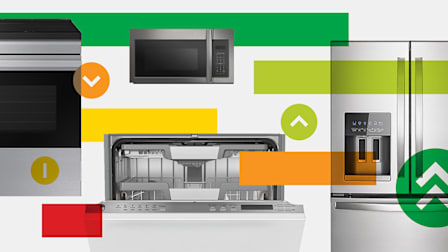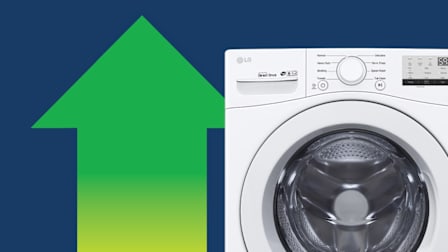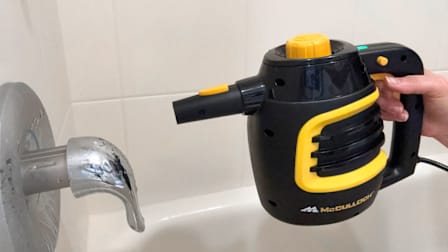Can the Inflation Reduction Act Save You Money on Appliances?
CR investigates the benefits for those buying an electric range, a cooktop, or a wall oven

The Inflation Reduction Act could help save you money if you’re replacing a kitchen appliance.
The landmark program, which runs through 2032, includes rebates and tax credits for bigger purchases, such as energy-efficient heat pumps and electric vehicles. But one lesser-known provision allocates funding for states to provide rebates for the purchase of new electric appliances, including cooktops, ranges (aka stoves), and wall ovens.
What Does the Inflation Reduction Act Do Exactly?
While the exact terms of the rebates for electric appliances will be decided at the state level, the Inflation Reduction Act provides a rough framework.
The legislation includes $4.5 billion in funding for states to provide rebates for the purchase of new electric appliances, including ranges, cooktops, and wall ovens. The Department of Energy will allocate funds to individual states, and each state will choose how to use those funds, sticking to parameters for income requirements and caps on individual rebates.
For example, you could receive a rebate of up to $840 for a new electric cooking appliance and up to an additional $500 to help cover the costs of converting from natural gas or propane to electric. If you need to upgrade your home’s electrical panel to accommodate an electric range (or any other electric appliance upgrade covered by the Inflation Reduction Act, such as certain electric heat pumps or electric-heat-pump clothes dryers), you could get a tax credit of up to $4,000 for that expense as well.
Will You Qualify for a Rebate If You Buy a New Electric Appliance?
It depends on how much you earn and where you live. Your state will set the exact framework, but the guidelines in the legislation call for the rebate amount to be dependent on how your household income compares with the median household income (HHI) of a particular area, to be determined by the state. For instance, it may pertain to your ZIP code, county, or the entire state.
If you earn:
- Up to 80 percent of the median HHI in your area, you get up to 100 percent of the cost of the new appliance (or up to $840, whichever is less).
- More than 80 percent but less than 150 percent of the HHI in your area, you get 50 percent of the cost of the new appliance.
- Above 150 percent of the median HHI in your area, you don’t qualify for a rebate.
To learn more, look for local information from your state’s energy office at the National Association of State Energy Officials.
What If You're Replacing an Electric Appliance With a New One?
As written, the legislation doesn’t disqualify you from receiving the rebate if you’re replacing an old electric appliance with a new model. But the answer depends on where you live. “Each state will deliver rebate funds, so people should check their state’s program for availability and details. There could be differences from state to state,” Nielson says.
If a state anticipates a lot of interest in the program, it could, along with DOE guidance, limit the credits only to gas-to-electric appliance replacements to maximize environmental benefits before the funding runs out. Or a state could open the program to cover those replacing an existing electric appliance, but with reduced benefits.
Does an Induction Appliance Qualify, Too?
Yes, induction ranges and cooktops run on electricity, so they count. Better still, induction ranges and cooktops are also the most energy-efficient option you can buy, according to the NRD. So while there’s no additional rebate for opting for induction, you may see some modest extra savings on your electric bill beyond what you’d save with an energy-efficient electric smoothtop range. As a group, many are among the best induction ranges tested by Consumer Reports.
How to Apply for an Inflation Reduction Act Rebate
Once the DOE allocates funding to individual states, those states will still need time to set up these programs. Once they’re up and running, the DOE suggests going to the Database of State Incentives for Renewables and Efficiency (DSIRE), which tracks rebates, tax incentives, and credits related to energy efficiency in all 50 states. Click on your state to see whether it has rolled out the program locally, and follow the steps listed.
Save any paperwork related to the purchase and installation of your qualifying appliance. Follow your state’s specific steps, including filing any rebate applications. You’ll probably receive the rebate at the point of sale or in the form of a check or direct deposit. But keep in mind that your state will set specific parameters. If you upgrade your home’s electrical panel to accommodate an electric cooking appliance, you’ll likely receive that money back in the form of a tax credit when you file your state and federal income taxes next year.
@consumerreports The Inflation Reduction Act could help you save money if you’re replacing a kitchen appliance. #kitchentok #inflationreductionact #kitchentiktok
♬ original sound - Consumer Reports




















